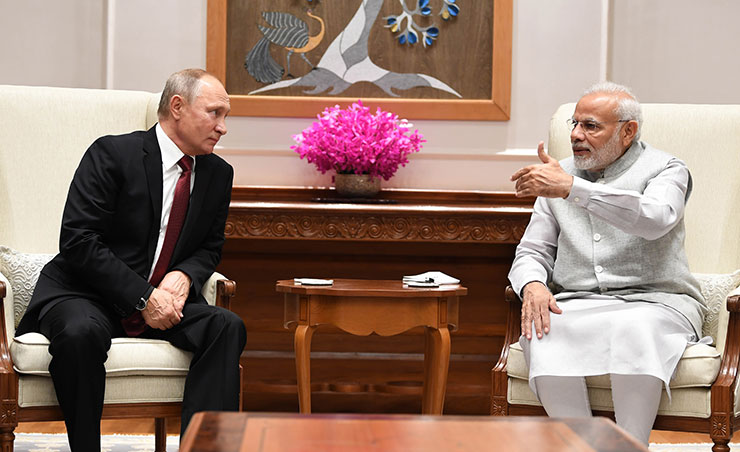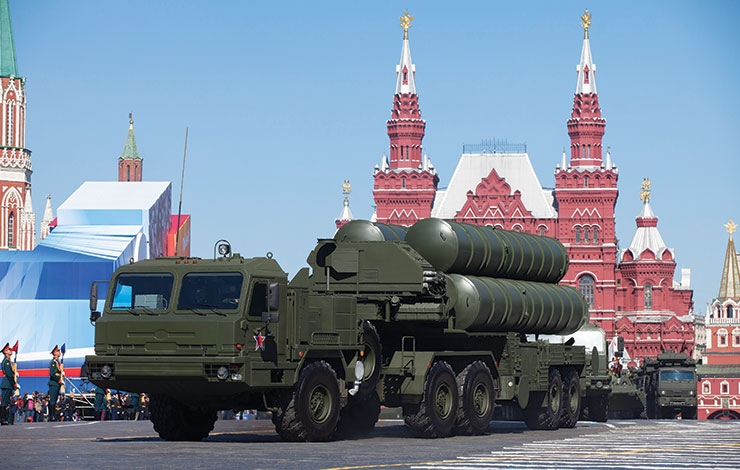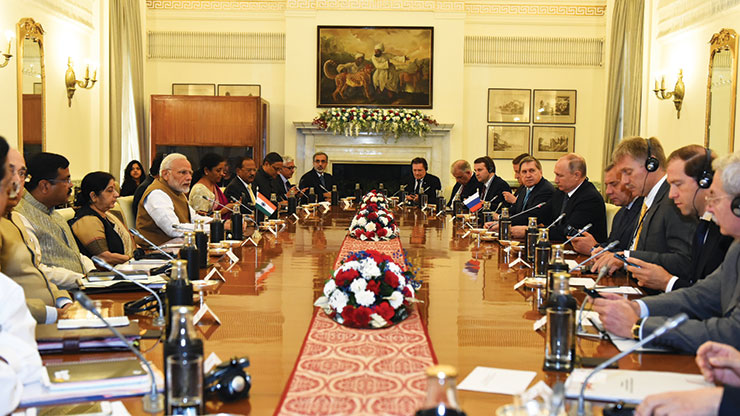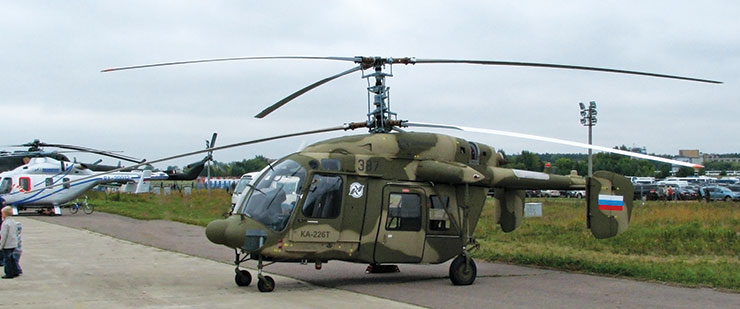
TWO WORLD Wars and the Cold War era can be a few of the major reference events regarding the role and importance of foreign language in defence and strategic sector. The changing socio-political dynamics created the necessity to understand and learn the languages of the alliance, and more importantly the enemies. Even in today’s scenario of changing geo-political dynamics, the then need of the hour to acquire necessary language (German/Russian/Japanese) skills apart from English could not be less emphasised upon. That apart, subsequent to the disintegration of Soviet Union and fading of the bipolarity in the world has led to a more regionally focused influence among the emerging major power centres.
The signing of the US $ 5.4 billion S-400 “Triumf” air defence missile system (ADMS) deal during the 19th Annual Bilateral Summit of the leaders of India and the Russian Federation is no doubt for several reasons is the real triumph and a major milestone in the over 70 year long traditional friendship between New Delhi and Moscow.
From the military angle this multilayer air defence system NATO code named SA-21 Growler is a game changer, capable of cooling hotheads across our western borders as their entire airspace will be under 24X7 watch of the Indian Air Force, but its geopolitical and foreign policy significance is much wider, if not of global scale.
Although it was announced only through a distant 45th paragraph of the joint statement signed by Prime Minister Narendra Modi and his Russian guest Vladimir Putin, the deal was a litmus test of India’s coveted ‘strategic autonomy’, with not only long term military-diplomatic implications on the road to achieving a ‘great power’ status but also reassuring old friend Russia and other nations – small and big – that it will not accept foreign diktat.

By defying the imminent threat of US sanctions under its domestic CAATSA legislation, Prime Minister Modi’s government has not only upheld India’s supreme national interests by acquiring a game changer weapon system capable of turning the tide on the regional chessboard where it faces the threat of “two front war” with its western and northern neighbours – Pakistan and China, but also regained the dwindling trust in ties with old friend Moscow at a time when the image of India continues to fade as a reliable friend.
“Friend India stands by Russia, rejects US sanctions,” Russian State TV observed commenting on the signing of S-400 ADMS deal in New Delhi. Incidently, Chief of the Army Staff General Bipin Rawat, whose six-day Russia visit coincided with President Putin’s India visit, assuaged the concerns of his Russian interlocutors over India’s growing ties with the US.
and Russia
“You can be rest assured [that] while we may be associating with America in getting some technology, but we follow an independent policy.
“I told them while we are talking sanctions and you are questioning on sanctions, President Vladimir Putin and Mr Narendra Modi, at this juncture, are signing the treaty on purchase of S-400 weapon system in spite of the fact that we may face challenges from America in the future,” the Army chief was quoted as saying by PTI.
The US CAATSA is basically aimed at hurting Russia, Iran and North Korea. However, its secondary sanctions under section 231 target the nations who go in for ‘significant’ defence deals with Moscow. Though there is a caveat that the US President can waive it in case of some legacy clients of Russian defence industry like India, but every six months he has to certify that they are taking steps to scale down arms purchases from Russia.

On the contrary, describing the military technical cooperation with Russia as an “important pillar” of bilateral strategic partnership the joint statement issued after the 19th Annual Summit says: “the Sides reaffirmed their commitment to enhance military technical cooperation between India and Russia, which has a long history of mutual trust and mutual benefit. Both Sides expressed satisfaction at the significant progress made on the ongoing projects of military technical cooperation and recognized the positive shift towards joint research and joint production of military technical equipment between the two countries. They highly evaluated the Military Industrial Conference process as an important mechanism to promote the “Make in India” policy of the Government of India.”
Interestingly, in November 2017 India and Russia set up a meeting of the High-Level Committee on Cooperation in High Technologies co-chaired by the NSA Ajit Doval and his Russian counterpart Nikolai Patrushev to identify concrete projects in areas of mutual interest for joint research and development.
According to the Russian media reports Secretary of Russian Security Council Nikolai Patrushev is to visit New Delhi shortly for follow up meeting with his Indian counterpart.
Frankly speaking, Prime Minister Modi and President Putin have totally ignored the threat of US sanctions over Indo-Russian defence cooperation. Most of time Russia has been under Western sanctions since the October Revolution of 1917, while India has also been under technological and strategic sanctions since ‘Smiling Buddha’ the first nuclear test under Indira Gandhi in May 1974 and later tightened after Pokharan-2 under the newly elected government of Prime Minister Atal Behari Vajpayee in 1998.

Diplomatic sources in the Russian capital say that both New Delhi and Moscow are used to overcome such sanctions because of their inherent strength.
Although, the deals for the four Talwar Class stealth frigates, two of which are to be built from scratch under ToT at Goa Shipyards, 200 Kamov Ka-226-T utility helicopters for the armed forces were not signed during the summit, mostly due to remaining formalities involving payments in the national currencies of the two countries bypassing US banks, sources say.
Russia has proposed bilateral trade, including defence sales under Rupee- Rouble arrangement, which is much different that the Soviet era rupee-rouble trade, as rouble is a freely convertible currency unlike in the past.
The use of national currencies would also boost the bilateral trade and deeper involvement in hi-tech projects like BrahMos under “Make in India” programmes to insulate bilateral defence cooperation from third party sanctions.








